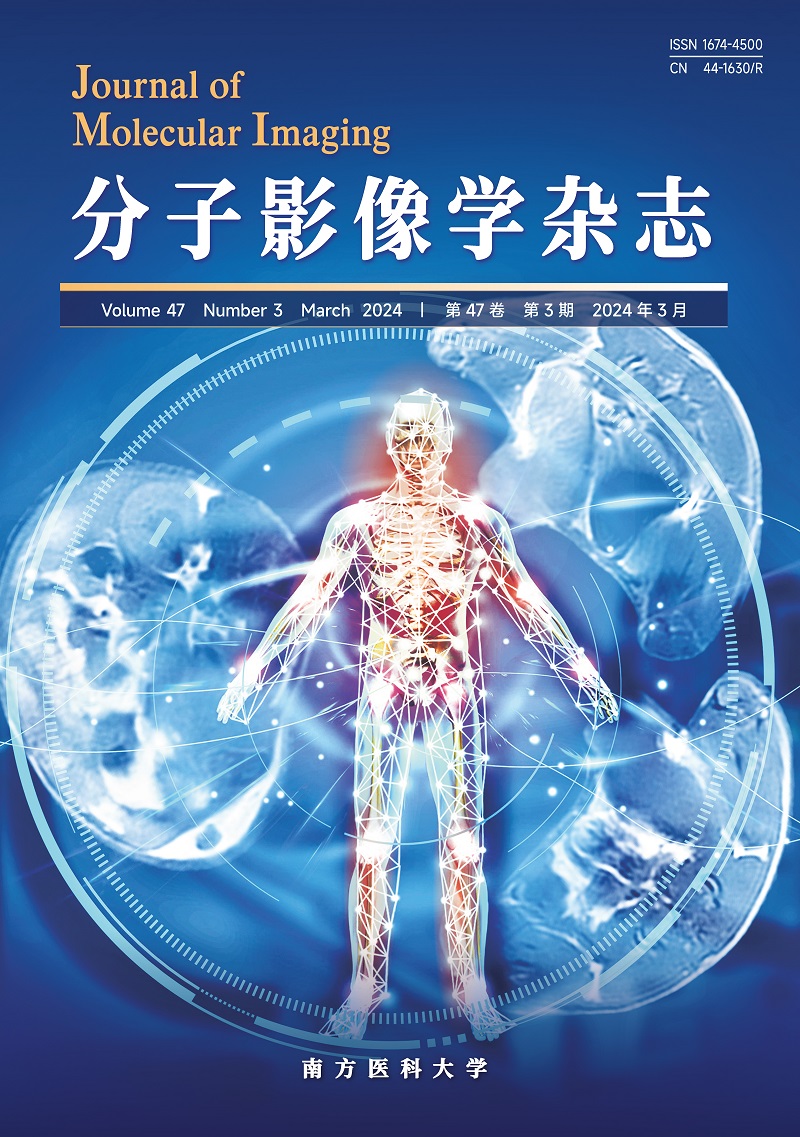User center
Read online
News
Links

- Current online:
- Total visits:
ISSN 1674-4500 CN 44-1630/R
Journal of Molecular Imaging (ISSN 1674-4500; CN 44-1630/R) is a national official journal managed by the editorial department of Journal of Southern Medical University. It is a monthly journal and a Chinese Science and Technology Core Journal (Statistical Source Journal of Chinese Science and Technology Papers), with the latest impact factor of 1.162.
It has been the Chinese Core Journals of Science and Technology (the Source of Scientific Papers Statistical Journal of China), China Academic Journal Comprehensive Evaluation Database (CAJCED), Chinese Core Journals (selection) Database", "China Academic Journals (cd-rom version)", "China Science and Technology Periodical Citation Report", Ulrichsweb (USA).
The main column of Journal: Basic research, clinical research, technology and Methods, etc. We does not charge any fee to review manuscripts. The publication time of the manuscript shall be within 6 months.
Address: 1838 North Guangzhou Dadao, Guangzhou City, Guangdong Province, China
PostCode: 510515 PhoneNo:020-62789575,61648177,61648176
Chronic obstructive pulmonary disease can not only involve the lungs but also cause systemic adverse reactions, and extrapulmonary effects can aggravate its severity, in which brain damage is gradually gaining attention from researchers. In recent years, neurological imaging technology has made great progress, especially based on voxel morphometry, diffusion tensor imaging, magnetic resonance spectroscopy and functional magnetic resonance imaging, which can not only non-invasively observe and detect the morphology and structure of the body, but also provide microcosmic information such as functional metabolism. This article reviews the characteristics, possible mechanism and research status of brain structural and functional changes in patients with chronic obstructive pulmonary disease from the perspective of MRI multi-parameter imaging, with a view to the more extensive and mature application of MRI in the field of neuroscience and the study of central nervous system diseases. Thus, it provides a new method and important information for further study and study of the pathophysiological mechanism of chronic obstructive pulmonary disease, clinical diagnosis and treatment and prognosis of the disease.
Thyroid nodules are now among the most frequent thyroid lesions, with a yearly rise in detection rates due to advancements in clinical diagnostic procedures and the widespread use of physical examinations. A non-invasive imaging assessment is crucial to the preoperative diagnosis of this condition. Dual-energy CT is a valuable addition to standard CT because it uses X-ray radiation from two distinct energy spectrums to offer a range of pictures with varied characteristics for the identification of thyroid nodules. This study provides an overview of dual-energy CT's multi-parameter imaging and basic principles. In order to generate ideas for the clinical application and future research of dual-energy CT in the diagnosis of thyroid nodules, the value of dual-energy CT in the diagnosis, differential diagnosis, and evaluation of lymph node metastasis in patients with thyroid nodules, as well as other potential application values, are reviewed concurrently.



 Find Duplicates
Find Duplicates
